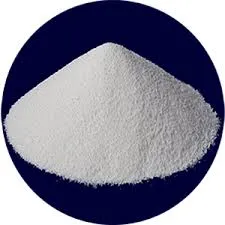- Afrikaans
- Albanian
- Amharic
- Arabic
- Armenian
- Azerbaijani
- Basque
- Belarusian
- Bengali
- Bosnian
- Bulgarian
- Catalan
- Cebuano
- Corsican
- Croatian
- Czech
- Danish
- Dutch
- English
- Esperanto
- Estonian
- Finnish
- French
- Frisian
- Galician
- Georgian
- German
- Greek
- Gujarati
- Haitian Creole
- hausa
- hawaiian
- Hebrew
- Hindi
- Miao
- Hungarian
- Icelandic
- igbo
- Indonesian
- irish
- Italian
- Japanese
- Javanese
- Kannada
- kazakh
- Khmer
- Rwandese
- Korean
- Kurdish
- Kyrgyz
- Lao
- Latin
- Latvian
- Lithuanian
- Luxembourgish
- Macedonian
- Malgashi
- Malay
- Malayalam
- Maltese
- Maori
- Marathi
- Mongolian
- Myanmar
- Nepali
- Norwegian
- Norwegian
- Occitan
- Pashto
- Persian
- Polish
- Portuguese
- Punjabi
- Romanian
- Russian
- Samoan
- Scottish Gaelic
- Serbian
- Sesotho
- Shona
- Sindhi
- Sinhala
- Slovak
- Slovenian
- Somali
- Spanish
- Sundanese
- Swahili
- Swedish
- Tagalog
- Tajik
- Tamil
- Tatar
- Telugu
- Thai
- Turkish
- Turkmen
- Ukrainian
- Urdu
- Uighur
- Uzbek
- Vietnamese
- Welsh
- Bantu
- Yiddish
- Yoruba
- Zulu
Nov . 10, 2024 09:07 Back to list
Veterinary Disinfectant Applications and Best Practices for Animal Health
Disinfectants in Veterinary Use Ensuring Animal Health and Safety
The use of disinfectants in veterinary practices is crucial for maintaining the health and safety of both animals and humans. In veterinary medicine, disinfectants are employed to eliminate pathogens that can cause diseases in animals and humans alike. This article explores the importance of disinfectants in veterinary settings, their types, applications, and best practices for their use.
Importance of Disinfectants in Veterinary Medicine
Veterinary clinics and hospitals are breeding grounds for various microorganisms, including bacteria, viruses, fungi, and parasites. Inadequate sanitation can lead to disease outbreaks, which may adversely affect animal health and compromise human safety. For instance, zoonotic diseases—those that can be transmitted from animals to humans—are a significant concern in veterinary practice. Effective disinfection practices play a critical role in controlling the spread of these pathogens, thus safeguarding not only the patients but also the veterinary staff and pet owners.
Types of Disinfectants
There are several classes of disinfectants commonly used in veterinary practices
1. Quaternary Ammonium Compounds (Quats) These are widely used due to their effectiveness against a broad spectrum of pathogens. Quats are often available in various formulations and are relatively safe to use around both animals and humans when applied correctly.
2. Phenolic Disinfectants Known for their strong antimicrobial properties, phenolic compounds are effective against bacteria, fungi, and certain viruses. However, they can be toxic to some animals, so cautious application is essential.
3. Chlorine Compounds Sodium hypochlorite, commonly known as bleach, is a powerful disinfectant effective against a wide range of microorganisms. While effective, it can be corrosive and has a strong odor; therefore, it should be used judiciously in environments with animals.
4. Hydrogen Peroxide As an environmentally friendly option, hydrogen peroxide breaks down into water and oxygen, making it a safe choice for use around animals. It is effective against a variety of pathogens and is less likely to leave harmful residues.
5. Aldehydes Glutaraldehyde and formaldehyde are potent disinfectants used in some veterinary practices. However, because of their toxicity, their use requires careful handling and adequate ventilation.
Applications of Disinfectants
Disinfectants are used in various applications within veterinary practices
disinfectant veterinary use

- Surface Disinfection Exam tables, cage materials, floors, and other surfaces must be routinely disinfected to prevent cross-contamination between patients.
- Instruments and Equipment Surgical and diagnostic instruments require stringent disinfection protocols to ensure they are free of pathogens before use
.- Animal Housing Disinfectants are crucial in the cleaning of kennels, stalls, and pens to prevent the build-up of pathogens that can lead to infections.
- Personal Protective Equipment (PPE) Disinfecting PPE used by the veterinary staff, such as gloves, gowns, and masks, is essential to prevent the spread of pathogens between different animals and the clinic environment.
Best Practices for Disinfectant Use
To maximize the efficacy of disinfectants, veterinary practices should adhere to best practices
1. Follow Manufacturer Instructions The effectiveness of a disinfectant depends on proper dilution, contact time, and application method. Always refer to the manufacturer's guidelines.
2. Implement a Cleaning Protocol Establish a cleaning protocol that outlines which surfaces and tools need to be disinfected and the frequency of these disinfections.
3. Use Personal Protective Equipment Veterinary staff should wear appropriate PPE when applying disinfectants to reduce exposure and protect themselves from potential harmful effects.
4. Regular Training Staff should undergo regular training in the use of disinfectants to ensure they are aware of the latest protocols and best practices.
5. Monitor and Evaluate Regularly assess the effectiveness of your disinfection procedures and make adjustments based on feedback and observational evaluations.
Conclusion
Disinfectants are indispensable in veterinary medicine, contributing significantly to the control of infectious diseases and ensuring a safe environment for animals and humans. By understanding the various types of disinfectants and their proper applications, veterinary practices can implement effective disinfection protocols that uphold health standards, minimize risks, and promote wellbeing. Through diligent disinfection practices, the veterinary community can continue to provide high-quality care while protecting public health.
-
Guide to Oxytetracycline Injection
NewsMar.27,2025
-
Guide to Colistin Sulphate
NewsMar.27,2025
-
Gentamicin Sulfate: Uses, Price, And Key Information
NewsMar.27,2025
-
Enrofloxacin Injection: Uses, Price, And Supplier Information
NewsMar.27,2025
-
Dexamethasone Sodium Phosphate Injection: Uses, Price, And Key Information
NewsMar.27,2025
-
Albendazole Tablet: Uses, Dosage, Cost, And Key Information
NewsMar.27,2025













